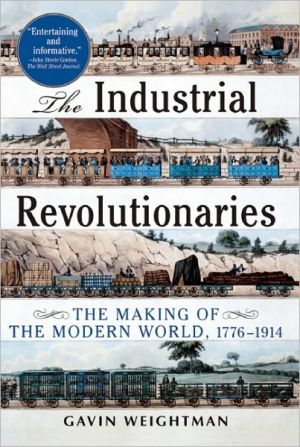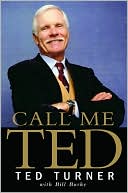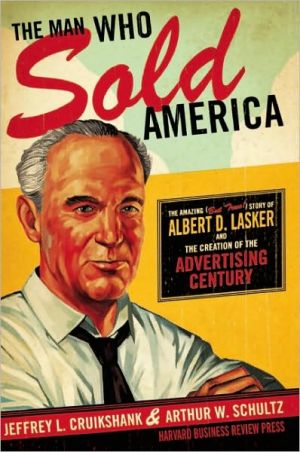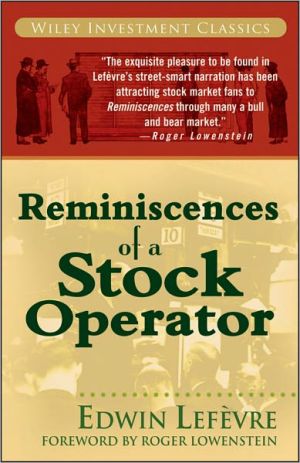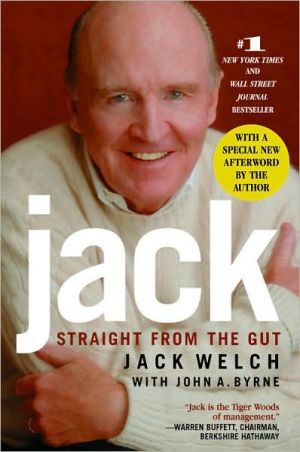The Industrial Revolutionaries: The Making of the Modern World 1776-1914
In less than one hundred and fifty years, an unlikely band of scientists, spies, entrepreneurs, and political refugees took a world made of wood and powered by animals, wind, and water, and made it into something entirely new, forged of steel and iron, and powered by steam and fossil fuels. In The Industrial Revolutionaries, a sweeping, critically acclaimed history of this transformation, Gavin Weightman weaves together the dramatic stories of giants such as Edison, Watt, Wedgwood, and...
Search in google:
Gavin Weightman’s sweeping history of the industrial revolution shows how, in less than one hundred and fifty years, an unlikely band of scientists, spies, entrepreneurs, and political refugees took a world made of wood and powered by animals, wind, and water, and made it into something entirely new, forged of steel and iron, and powered by steam and fossil fuels. Weightman weaves together the dramatic stories of giants such as Edison, Watt, Wedgwood, and Daimler, with lesser-known or entirely forgotten characters, including a group of Japanese samurai who risked their lives to learn the secrets of the West, and John “Iron Mad” Wilkinson, who didn’t let war between England and France stop him from plumbing Paris. Distilling complex technical achievements, outlandish figures, and daring adventures into an accessible narrative that spans the globe as industrialism spreads, The Industrial Revolutionaries is a remarkable work of original, engaging history. The Barnes & Noble Review As familiar as the outlines of the Industrial Revolution are, no one will be surprised to learn that every steam-powered invention has a murky history of rivalries, precedents, and counterclaims. However unsurprising it may be, it is still fun to learn that a century before Edison had his Tesla, Watt had his Trevithick. The more gripping tale that Gavin Weightman has to tell in Industrial Revolutionaries, though, is of the commercial cold war waged especially by England and France through and over iron and steam, with many sidewise glances toward America. Gentlemen cross the Channel again and again to sniff out the secrets of new engines and recruit defectors -- a British artisan might face prison if he tried to return home after working in France -- while Robert Fulton tries to sell torpedoes to Napoleon before offering them to Nelson. The most fascinating and unfamiliar tale is that of the "Chosun Five." At a time when the shipwrecked Japanese fishermen rescued by American whalers might be looked on by the Shoguns as traitors infected by the West and even be executed, in 1854 five Samurai risked everything to secretly travel to Britain and bring knowledge of 19th-century technology back to Japan. Ten years later British vessels were shelling the Japanese coast, trying to force Japan to accept all at once the revolution that European industrialists had staged so fitfully over the previous century. --Sean Redmond
List of Illustrations viAcknowledgements ixIntroduction 11 Spies 102 Mad About Iron 223 The Toolbag Travellers 374 The Cornishman's Puffer 485 They Kept Their Heads 676 Some Yankees in the Works 907 The Railway Men 1178 Cowcatchers and Timber Tracks 1369 Les Rosbifs Go To Work 15210 A Prophet Without Honour 17311 A Blast of Hot Air 19012 Morse Decoded 19713 The Palace of Wonders 21314 'A Very Handsome Tail' 23215 The Petroleum Pioneers 25216 The Steel Revolution 27017 Of Scots and Samurai 28518 Horsepower 29919 The Wizard of Menlo Park 32420 The Terror of the Torpedo 34221 The Synthetic World 361Postscript 383Notes 394Bibliography 402Index 407
\ Stephen MihmGesner is but one of the fascinating characters Gavin Weightman brings to life in The Industrial Revolutionaries, his engaging survey of the countless men and women who wedded technological innovation to capitalist profit or nationalist agenda, and in the process helped usher in the modern era. … He is remarkably successful at capturing this process, skillfully stitching together thumbnail sketches of a large number of inventors, architects, engineers and visionaries central to the "global spread of industrialism" from the 18th century to the eve of World War I.\ —The New York Times\ \ \ \ \ Publishers WeeklyRather than an impersonal juggernaut, the British industrial revolution presented in this sprightly, if overly busy, study is the very human endeavor of inventors, engineers, craftsmen and entrepreneurs. Historian Weightman (London River) surveys the 19th-century development of the railroad, steel, oil, automobile and chemical industries and the evolution of marvels from the steam engine to electric lighting. There are few geniuses or breakthroughs-the author says, for example, Thomas Edison excelled more at public relations than at mechanical innovation. Rather, this is a long slog through oft-forgotten pioneers. In Weightman's telling, industrialization proceeded through trial-and-error, hard-won expertise, laboriously amassed financing and the outmigration of technology and know-how from Britain. (He visits the industrial espionage demimonde that flourished when Britain vainly outlawed the export of technical secrets and skilled craftsmen.) The larger picture, and Weightman's too-sketchy accounts of technical innovations, sometimes get lost in the microhistory of prototypes, business startups, patent disputes and extraneous human interest (the singing von Trapp family, we learn, descended from the inventor of the torpedo.) Lacking the sweep and adventure promised in its epic title, Weightman's anecdotal narrative presents a realistically small-scale view of industrial progress. Illus. (Apr.)\ Copyright © Reed Business Information, a division of Reed Elsevier Inc. All rights reserved.\ \ \ Library JournalIn the period covered by this book-just a little over a century-the world shifted from reliance on human labor to the use of machines as an essential aspect of daily life and work. Weightman's (The Frozen Water Trade: A True Story) well-researched study examines the lives of familiar figures who made such advancement possible and brings to light equally important names now absent from general knowledge. Yet it would be a mistake to regard this simply as a collective biography of inventors and their creations, for an equal amount of attention is given to the movement of technological innovation worldwide. Britain may have begun as the center of modern industry, but it was the spread of its achievements and subsequent refinements by other countries that helped drive industrialization to a rapid pace. While giving proper credit to the minds and efforts of the people involved, Weightman provides a thoughtful exploration of the paths through which their inventions and knowledge were transmitted and how particular circumstances, such as natural resources, socioeconomic needs, and political climates influenced and shaped a county's industrial development. Highly recommended.\ —Kathleen McCallister\ \ \ \ \ \ Kirkus ReviewsBreezy social history of the inventors and entrepreneurs who transformed society with innovations in infrastructure and technology. Weightman (London's Thames, 2005, etc.) seeks to reverse the popular notion of the Industrial Revolution as "driven by some impersonal force." His collection of individual life stories spans from the first major changes in manufacturing processes and iron smelting in 18th-century England to the growth of indigenous industries in Germany, Japan, France and the United States, which had eclipsed Britain's supremacy by 1914. As the initially dominant innovator, England teemed with foreign spies maneuvering to uncover the secrets of textile spinning machines. British engineers found lucrative opportunities abroad as they shared expertise in canal building, steam railway, bridge and lighthouse construction. Weightman emphasizes the importance of this British expertise for creating infrastructure and driving innovation in both America and Japan, which also benefited from continental influences. French immigrant E.I. du Pont, fleeing from the Revolution, initiated the development of gunpowder in the United States, and American Samuel F.B. Morse, though he claimed to be the sole inventor of the electric telegraph, in fact built on European discoveries. Many of the worldwide pioneers who furthered technology had no background in engineering, notes the author, but these entrepreneurs partnered with the right technical minds to further their visions. Britain was overtaken as industrial leader in the second stage of the Industrial Revolution, as the age of steel, oil and electricity favored rapidly growing nations such as the United States and Germany. Weightman crams hisnarrative with anecdotes, such as the Russian fleet, sailing around Africa en route to war with Japan in 1904, taking time out for inland forays to acquire an exotic menagerie including "a boa constrictor which apparently developed a taste for vodka." This fondness for excessive detail results in the book's few memorable individuals getting lost among an "army of artisans."Like cotton candy-tasty yet somehow insubstantial. Agent: Charles Walker/PFD\ \ \ \ \ The Barnes & Noble ReviewAs familiar as the outlines of the Industrial Revolution are, no one will be surprised to learn that every steam-powered invention has a murky history of rivalries, precedents, and counterclaims. However unsurprising it may be, it is still fun to learn that a century before Edison had his Tesla, Watt had his Trevithick. The more gripping tale that Gavin Weightman has to tell in Industrial Revolutionaries, though, is of the commercial cold war waged especially by England and France through and over iron and steam, with many sidewise glances toward America. Gentlemen cross the Channel again and again to sniff out the secrets of new engines and recruit defectors -- a British artisan might face prison if he tried to return home after working in France -- while Robert Fulton tries to sell torpedoes to Napoleon before offering them to Nelson. The most fascinating and unfamiliar tale is that of the "Chosun Five." At a time when the shipwrecked Japanese fishermen rescued by American whalers might be looked on by the Shoguns as traitors infected by the West and even be executed, in 1854 five Samurai risked everything to secretly travel to Britain and bring knowledge of 19th-century technology back to Japan. Ten years later British vessels were shelling the Japanese coast, trying to force Japan to accept all at once the revolution that European industrialists had staged so fitfully over the previous century. --Sean Redmond\ \
